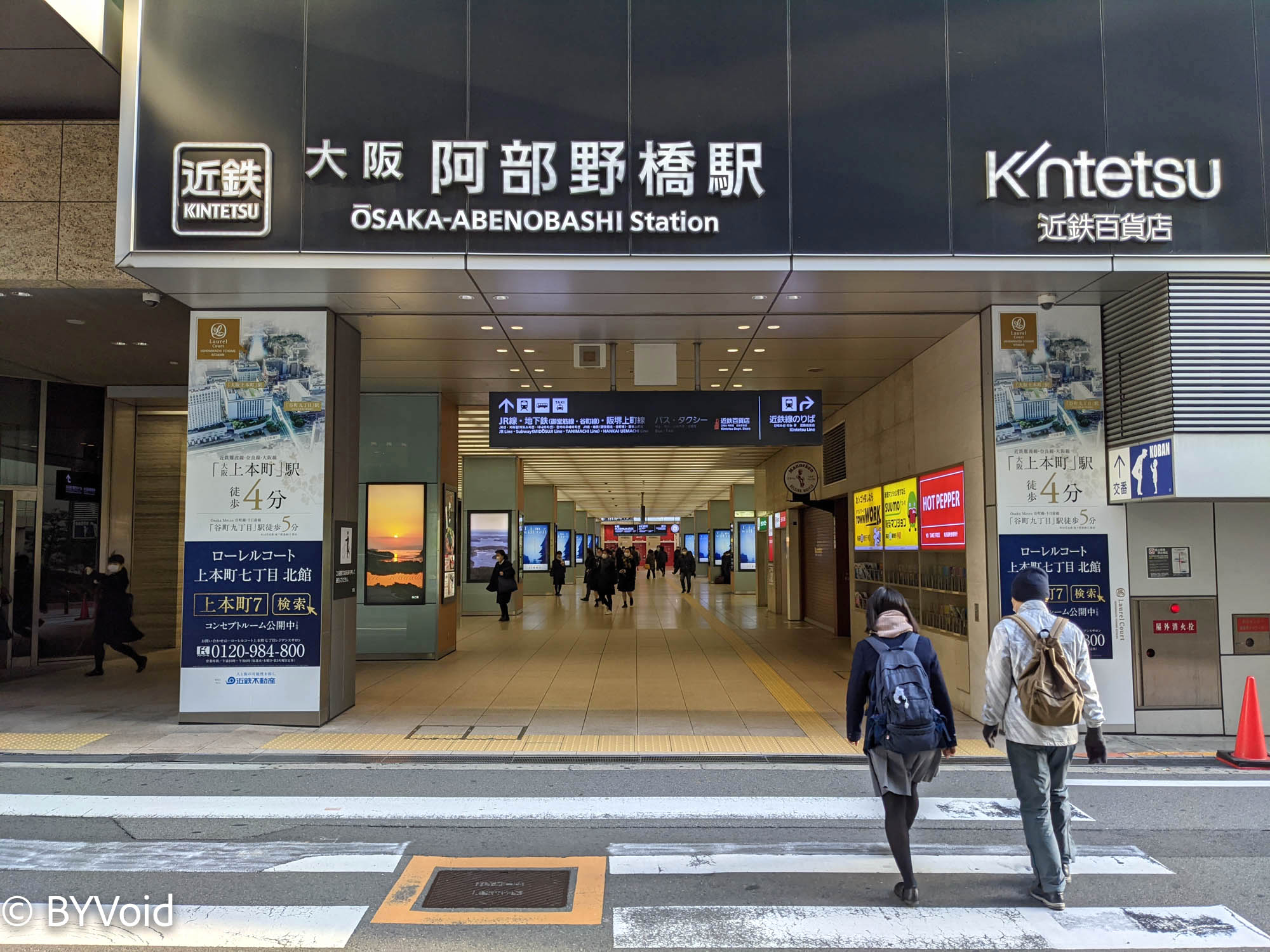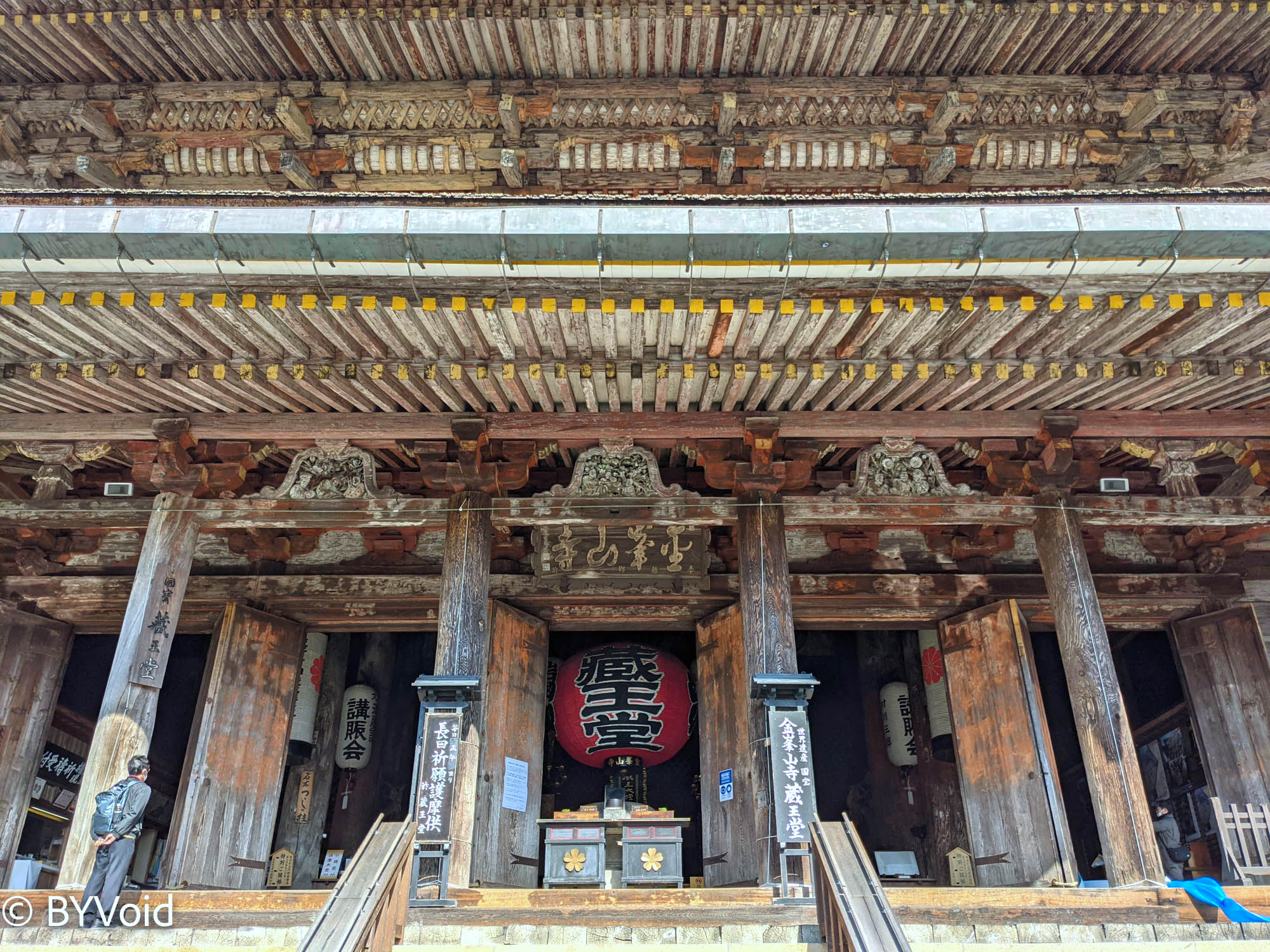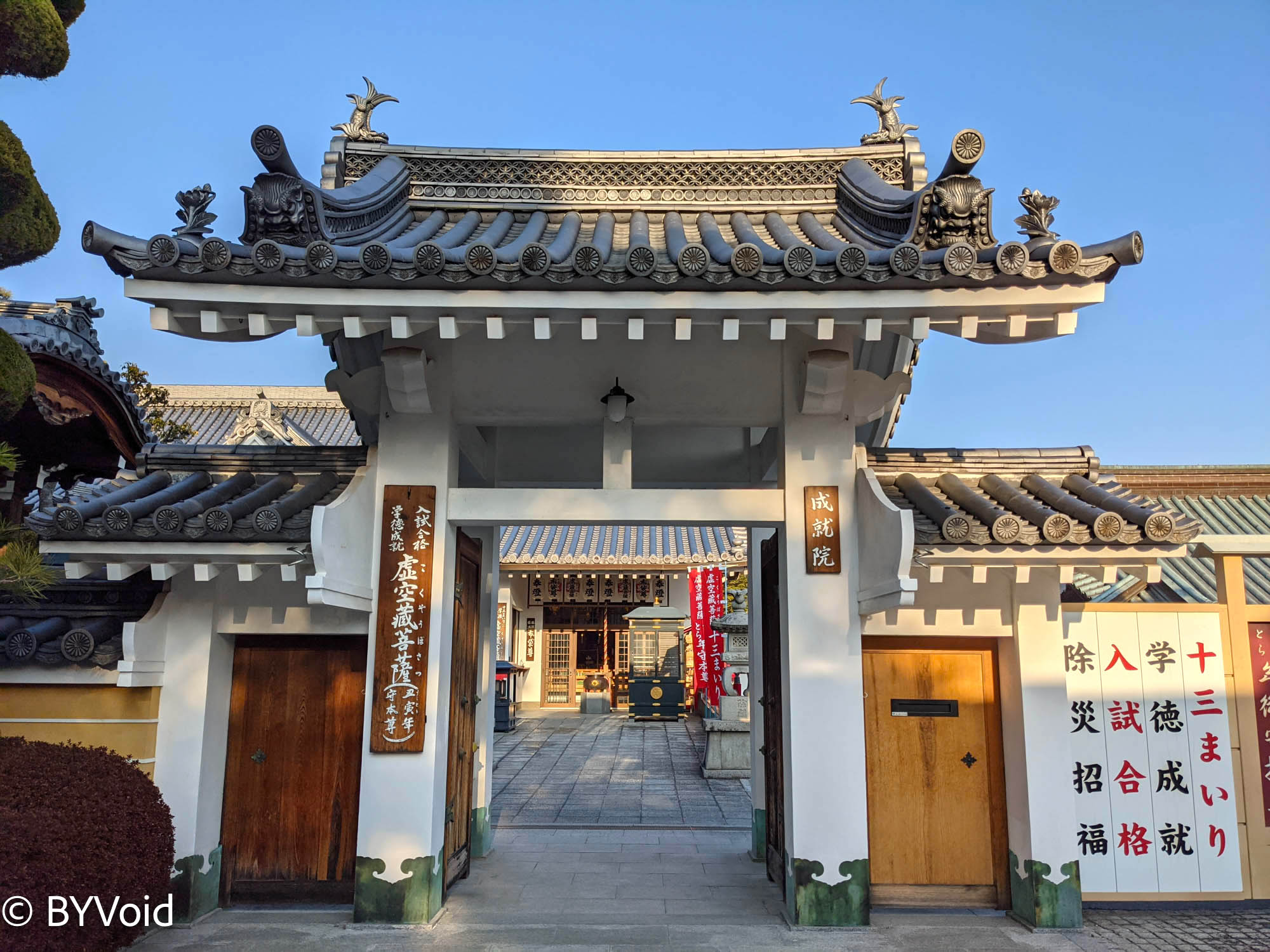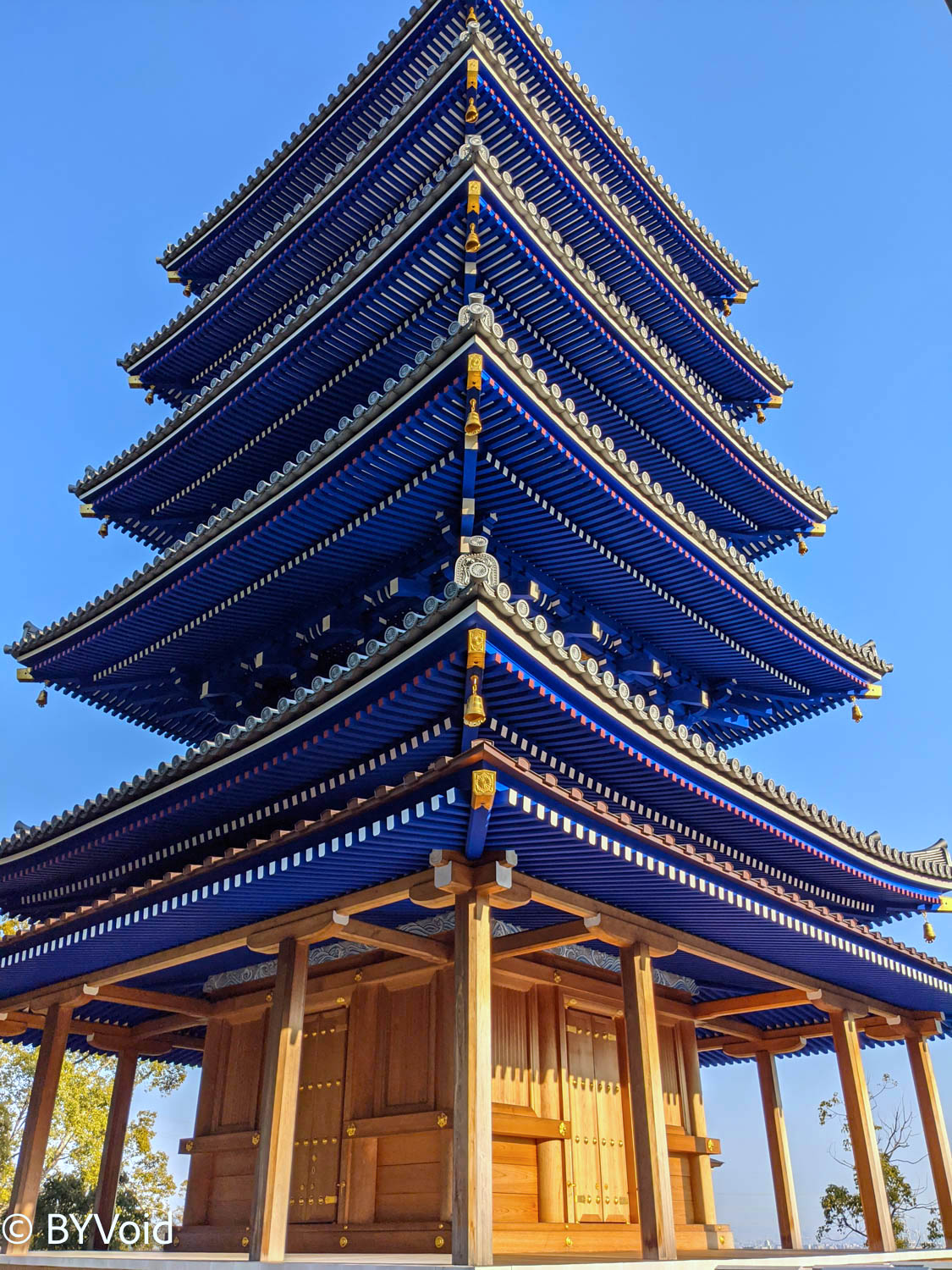Beyond the Void https://ift.tt/h10VdAn –
Written in February 2021. Spring in Japan always comes quietly, the temperature rises a lot at once, and then there will be a sudden cold snap, returning to winter. My trip was one of those weekends, and that’s the day I started having allergies for the first time in my life, and I’m still battling unexplainable allergies to this day. Now I miss the days when I never had allergies before, it’s like a lifetime. Only this article commemorates this watershed.
random destination
Since the beginning of 2021, I haven’t been at home for a long time, and I’m a little bit eager to move again. It just so happened that some of Japan Airlines’ miles were about to expire, so I usedどこかにマイルto try my luck. “どこかにマイル” is a special way of redeeming miles by Japan Airlines. You only need 6000 points to get a round-trip ticket to a random destination. Choose a date and time slot when booking, and four possible locations will appear. Wait a few days after paying your miles and JAL will reveal your destination. According to Murphy’s Law, the chosen destination is often the one you least want to go to. This time was an exception, my destination was randomly selected to Osaka. I’ve been to Osaka many times, but every time I go, I look forward to the next one. After all, with Osaka as the center, Kansai is the center of Japan’s history and culture, and there are countless places to go.
Dotonbori without tourists
After arriving at Osaka Itami Airport on Friday night, I went to the Shinsaibashi and Dotonbori areas first. No specific destination, just wanted to see how the streets once occupied by tourists from all over the world are now. Sure enough, there were very few people in the Shinsaibashi shopping street, many shops were closed, and the word duty-free on the huge signboard was broken. The same goes for Dotonbori, where a few stores are still operating bleakly, albeit with little success.

At night, I stayed at the large public bath in Shinsekai, which has a special room. This large communal bath is the largest in Japan that I have been to, and there are different bathing methods in different countries. This is my most recommended large bath and it is worth a try for anyone coming to Osaka.

Jinfengshan Temple
The next day, I got up and walked from Shinsekai Bath to Kintetsu Abeno Bridge, and took the limited express train to Yoshino. Yoshino is in the southern part of Nara City, some distance from Osaka, and the direct train takes 1 hour and 15 minutes.

Yoshino is very famous in the cherry blossom season, but I am obviously not here to enjoy the flowers this season, but to visit the famous Jinfengshan Temple. Jinfengshan Temple is located in the valley of the Yoshino River (Kino River) on the southernmost edge of the Nara Plain, and to the south is the lofty mountains of Kumano.
Jinfengshan Temple is a representative of Japan’s “God and Buddha”, and the deity dedicated to it is “Zangwang Quanxian”. The Tibetan kingship is not Buddhism from India or China, but the object of belief that originated from native Buddhism in Japan. The so-called “quanxian” is the incarnation of the Buddha in (Mahayana) Buddhism. After the concept of “quanxian” was introduced to Japan, it was localized, referring to the fact that the eight million gods of Shintoism were all manifested by various Buddhas. This theory is also known as the “local trail theory”. For example, the local trail theory believes that Amaterasu is the incarnation of the Great Sun Tathagata. After the Meiji Restoration, out of nationalism, the theory of local trails was completely rejected by the new government. With the promulgation of the “Decree of God and Buddha”, Buddhism has been suppressed unprecedentedly, so that monasteries where God and Buddha are combined are rare.
Visiting Buddhist temples in Japan often has a more pure feeling than in China. The so-called purely means that the Buddhas and Bodhisattvas enshrined in Buddhist temples are all from Mahayana Buddhism (of course, Mahayana, especially Tantra itself, has mixed many Brahmanism and even Zoroastrian gods, which is another topic). In many temples in China, gods of Taoism and traditional Chinese folk beliefs are often mixed in, such as Guan Gong, God of Wealth, and Mazu. This is precisely the result of the separation of gods and Buddhas in Japan for more than 100 years, making Japanese Buddhism more “fundamental”. Of course, there are many exceptions. The Jinfengshan Temple that I want to go to today still has a lot of remnants of the combination of gods and Buddhas.
From Yoshino Station, there are still many ways to hike up the mountain, but there are ropeways to take. The ropeway only takes 3 minutes, you can sit on the mountainside, and you have to walk for a while to reach Jinfengshan Temple. The first thing you see is the Black Gate, the first mountain gate.

Continue walking for ten minutes, and you can reach the second mountain gate, called Faxin Gate. Although it is called Faxin Gate, it is clearly a copper torii gate. Torii is an important building in Shintoism. According to Shintoism, passing through the torii will enter the realm of the gods. It is both a torii and a mountain gate. It can be seen that the gods and Buddhas are one and the family has not yet been separated.

The last gate is the most spectacular Niwang Gate. The Nioh Gate is under repair, so you can’t see it up close, but you can feel its grandeur from a distance.

Bypassing Niwangmen, you will enter the main area of Jinfengshan Temple. The main building of Jinfeng Mountain is a huge Buddhist temple called “Zangwang Hall”. The Zao-do is very majestic, with double eaves and Xieshan Mountain (double-layered into the mother house), and the roof material is the unique Japanese cypress (槧皮葺き). The main deity, King Zao, is enshrined in the Zao Hall, but it is usually not publicly displayed. The deity Buddha can only be “opened” on special days for believers to pay their respects. This is also one of the characteristics of Japanese esotericism. It is mainly found in the temples of Shingon and Tendai, but the Pure Land and Zen Buddhism occasionally have “secret Buddhas”. Entering the hall, you can see other Buddhas around, among which there is also a Tibetan king Quanxian. The statue’s eyes are wide open, and it looks like the immobile king. In addition, there are not too many traces of Shintoism in the hall.

The Zao Kwon enshrined in Jinfengshan Temple is now the main Buddha of Shugendo in Japan, and appears in the form of King Ming. Shugendo is an ancient Buddhist tradition of mountain and forest practice, also called Aranya practice. The original meaning of Aranruo (araṇya) is forest, and it was later extended to monastery, so some monasteries or places of practice are also called “jungles”.
The ascetic Kokaku (えんのおづぬ) of the Nara period was inspired by the manifestation of the combination of Sakyamuni Buddha, Avalokitesvara and Maitreya Bodhisattva “Zangwang Quanxen” when he practiced at Jinfengshan Temple, and founded Shugendo. Shugendo was later integrated into Japanese esotericism, and was deeply influenced by Shingon and Tendai. To this day, the Kumano Mountains in the southern part of Nara are still the training grounds for Shugendo. Shugendo is arguably the most localized branch of Buddhism in Japan.
Yoshino court
There is a “Yoshino Palace Site” not far below the terrace where Zaotang is located. There is a three-story octagonal pagoda named “Miaofa Hall of the Southern Dynasty”. According to the explanation on the display board, it used to be the imperial residence of the Southern Dynasty, and the Emperor Godaigo of the Southern and Northern Dynasties in Japan used it as a base to fight against the Northern Dynasty controlled by the Ashikaga shogunate.

Yoshino has historically been the seat of the Imperial Palace of Japan, and its most glorious moment was at the end of the Kamakura period. At that time, Emperor Godaigo left Heian-kyo with the “Three Sacred Artifacts” that symbolized Yamato’s royal power and divine power, went into exile at Yoshino Palace, established the Southern Dynasty, and competed with the Northern Dynasty of the Muromachi Shogunate. Because the base is in Yoshino, the Southern Dynasty is also called Yoshino Dynasty. The distance from Yoshino to Kyoto is actually less than 100 kilometers, which is completely incomparable with the Northern and Southern Dynasties in China. If China is used as a reference point, it is incredible that the two imperial courts have been facing each other for fifty-seven years in the small area of the Inner Plain. Even after the collapse of the Southern Dynasty, there were still relics (Post-Southern Dynasty) and the shogunate who continued to fight against the Warring States period at the end of the fifteenth century. However, in the era of Emperor Meiji, history was reversed, and the Southern Dynasty was finally designated as orthodox.
Continuing to walk a few minutes south from Jinfengshan Temple, you will arrive at another legendary imperial residence, now called Yoshisui Shrine. This humble shrine has a great academy. According to its explanation, the academy of Jishui Shrine, formerly known as Jishui-in, used to be the monk’s house of Jinfengshan Temple. Yoshisui-in claims to be the earliest academy in Japan, dating back to the Hakuho period (seventh century). However, I doubt this statement, because according to scientific research (annual ring dating method), the East Pagoda of Yakushiji Temple in Nara is the only existing building from the Hakuho period.

The brochure of Yoshisui Shrine also said that at the end of the Heian period, Yoshitsune and his concubine Jing Yuzen lived in seclusion in Yoshizuin. Later, Emperor Godaigo also used this place as a palace, and this building is the only existing palace of the Southern Dynasty. In the later Warring States Period, Toyotomi Hideyoshi held a flower viewing banquet in Yoshino and stayed at Yoshizuin for several days. There are various rare treasures on display in the Yoshisui Shrine, including the bronze and gold screens of Toyotomi Hideyoshi, the lute of Emperor Godaigo, the calligraphy of monk Ikyu, and the book form of Mito Tokugawa Mitsuwa. Because it’s too exaggerated, I’m not quite sure that it’s true, and I always feel like I’m affiliating.
After leaving Yoshisui Shrine, I went down the same way. Although there are other shrines and temples in the deeper part of the mountain, there are still the remains of Miyataki at the foot of the mountain, which is said to be the emperor’s palace in the Asuka era. There are also many palace ruins of the Yoshino court, but due to the inconvenience of transportation, I did not visit this time.
Koriyama Castle
Take the Kintetsu train back to Kashihara Shrine, and then change to the Kintetsu Kashihara Line to Koriyama. During the transfer, it took me ten minutes to quickly settle my lunch inside the station. Many stations in Japan have small cafeterias, which are very suitable for quick meals.
Get off at Kintetsu Koriyama Station and walk for 10 minutes to Koriyama Castle. Koriyama Castle is not particularly famous, but in Kinki, Japanese-style castles are relatively rare. Because Kinki is not a daimyo’s sphere of influence, but has always been directly ruled by the “court”, similar to the Luoyi King of the Eastern Zhou Dynasty. In 1580, Tsutsui Shunke built a fort here. It was the only city in Yamato at that time. As the sphere of influence of the emperor and ministers directly under the jurisdiction, it was not until the decline was too small that it allowed the princes (wu family) to come here to build a city. Not much remains of Gunsan Castle, except for a rebuilt gate, a trench and a tower. Climb to the tower and overlook the surrounding plains.

Koriyama Castle and the surrounding area is now a park, and I just happened to encounter plum blossoms in full bloom, and the scenery is charming.

Port of Osaka
After admiring the plum blossoms of Koriyama Castle, the afternoon is already half over. I started to return to Osaka, stopping by a railway line I hadn’t ridden before. After taking the Kintetsu Kashihara Line to Tawahara, I ran out of the station and ran to Nishidahara, a hundred meters away. Although the two stations belong to the Kinki Railway, they are not connected. What’s worse is that the transfer time is only three minutes, otherwise it will take an extra half an hour. I don’t know why the timetable is arranged this way. It may be that almost no one transfers here.

I got on the train that Nishida originally departed from, but it took more than 20 minutes to arrive at Xinwangji Station at the end. Walking 200 meters from Xinwangji Station is another station of Kintetsu, Wangji, which is also not connected, and the transfer time is only four minutes. After catching up with the car, it was finally time to rest. After I changed trains in Ikoma, I sat all the way to the Cosmos Plaza (コスモスクエア) at the end of Osaka Port. This is a land reclaimed from the sea. There are beautiful parks by the sea and many high-rise residential buildings nearby. From the same station, there are also unmanned monorails, which are especially suitable for viewing. The style here is very similar to Odaiba in Tokyo.
The name “Cosmos Square” is very characteristic of the times, and names of this style are often seen in the bubble era of Japan at the end of the Showa era. At that time, the Japanese people’s self-confidence was higher than the sky, as if the earth could no longer accommodate Japan, and there was only one left to explore the universe and the future.

Before sunset, I arrived at Suminoe Park Station. There is an Osaka Gokoku Shrine here. Protectorate Shrine actually means Yasukuni Shrine, but only the head office in Tokyo can be called “Ysukuni”, others are “protectorate”. Japan’s large and small cities have a guardian shrine, which is the remnant of the pre-war national Shinto religion, and is now a place to mourn the souls of soldiers before the empire’s defeat.

The most notable features of Gokoku Shrine are its huge bronze or stone torii gates and various memorial monuments.

There are various kinds of memorial monuments, some in the shape of cannonballs, and there are also “Monuments of Loved Horses”, which are really living fossils of militarism.

Osaka International Exposition Memorial Park
The next morning, I set off from my residence and headed straight to the Expo’70 Commemorative Park in Kita-Osaka. Osaka once held the World Exposition in 1970, which is called the World Exposition in Japan, and the venue is still called the Expo Commemorative Park. The Expo’70 Commemorative Park is so huge that you can spend a whole day in it. I entered from the east gate early in the morning, and it took a long walk to reach the central area. The park still retains the tower of the sun, a landmark building at that time, and it is still a popular photo spot, and the most crowded place in the park is here.

Steel Pavilion Museum
This huge park, once crowded with pavilions from all over the world, has now been demolished, leaving only the steel pavilion, used as a museum for the World’s Fair, commemorating the unprecedented event in 1970. Paid to enter the museum and found it unexpectedly good. There are many exhibits in the museum, almost all of which were intentionally preserved at that time, such as admission tickets, exhibition boards, and advertisements. There are also some very interesting statistics, such as 48,139 lost children in the venue, 55 groups of marriages, 1 childbirth, 2,755 toilet pits and so on.

As one of the two major events in the era of Japan’s economic boom, the Osaka World Expo has created a lot of history like the Tokyo Olympics. For example, it is the first World Expo in which the organizer has made positive profits. Among the hundreds of pavilions in the 77 countries participating in the exhibition, the Soviet Pavilion is the tallest and most popular one. 1970 also happened to be the height of the Soviet Union in that era.

In 2025, Osaka will host the World Expo again. After the fiasco of the Tokyo Olympics, I am afraid that no one believes that this World Expo will be able to create the glory of the year. The two successful events half a century ago were not the reason for stimulating Japan’s economic development, but the result of that boom era. There is a sense of defeat in Japanese society right now, and unless confidence can be reversed, this will likely dim the Japanese economy for a long time.
Japanese garden
The Japanese garden in the northern part of the park is also preserved, but I was a little disappointed after visiting. This garden may not be bad for people who haven’t seen Japanese gardens very much, because it has a little bit of garden elements in various styles, but nothing stands out. However, it divides the gardens of different eras in Japan, and it might be good to think of it as a garden history museum.

National Museum of Ethnology
Another highlight in the park is the National Museum of Ethnology. Originally I thought it might be the Japanese Folk Museum or the Japanese Ethnographic Museum, but was surprised to find that it contains all kinds of different cultures and peoples from the world. The exhibition halls are arranged according to continents. For each ethnic group, various cultures and folk customs are involved. The exhibits are also carefully selected. They are both distinctive and eclectic, and the standard is quite high. Another thing that is commendable is that it is very advanced with the times. There is an exhibition area dedicated to showing the immigrant groups in Japan in recent years.

Zhongshan Guanyin
Since the afternoon, I suddenly had symptoms of allergic rhinitis. I suspected it was the pollen in Expo Park, so I left quickly.
I took the Hankyu Line to Zhongshan Kannon Station in Hogan City to visit Zhongshan Temple (なかやまでら) . Zhongshan Temple is affiliated to the Shinyan sect and believes in esotericism. The deity is the eleven-faced Guanyin. The deity Guanyin belongs to the “secret Buddha” and is usually not made public. Zhongshan Temple claims to be the Guanyin Temple built by Prince Shotoku, but the earliest existing buildings can only be traced back to the Warring States Period.

Zhongshan Temple is divided into many courtyards, each of which enshrines different Buddhas and Bodhisattvas of the ten directions. Among them is the “Succession Court”, which is dedicated to the Bodhisattva of Void Treasures. Void Treasure is one of the eight Mahayana Bodhisattvas, in charge of the Great Seed (mahābhūta, the basic element) and the Void Realm (ākāśa-dhātu). Seeking the Void Treasure Bodhisattva can gain boundless memory, which is very suitable for East Asian exams. Compared to asking for Manjushri, who represents great wisdom, it is straightforward to ask for Void Treasure Bodhisattva. If you really get great wisdom from Manjushri, you may just see through the nature of the exam, and it has no practical help for the exam. It is better to seek Void Treasure Bodhisattva, directly obtain infinite memory, and reduce the test to a blow. Zhongshan Temple is well versed in this way, and wrote the signboard of the Void Treasure Bodhisattva as “passed in the entrance examination” and “successful in learning and morality”.

There is a blue five-story pagoda in Zhongshan Temple with a unique shape. Because of its color, it is called “Qinglong Tower”. Although this kind of pagoda cannot be visited, it is possible to learn about the inner circle from the outside. Inside the stupa, there are five Buddhas of the Vajra Realm of Tantra, with the Great Vairocana Buddha (Dari Tathagata) as the center, the Buddha in the east, the Buddha in the west, the Buddha in the south, and the Buddha in the north. .
From a close distance, the color of this five-story pagoda is particularly bright, and the contrast is very high, and it may even cause eye discomfort after looking at it for a long time.

In the afternoon, my allergic rhinitis started to worsen, so I had to end the trip and go back to Tokyo. Unexpectedly, allergic rhinitis will accompany me from now on.
Japanese roaming series
– https://ift.tt/h10VdAn – 2007-{year} BYVoid
This article is reprinted from: https://byvoid.com/zht/blog/jp-roaming-ohosaka-yoshino/
This site is for inclusion only, and the copyright belongs to the original author.
